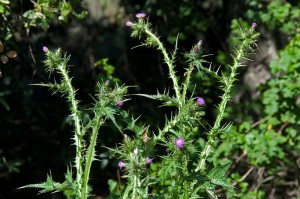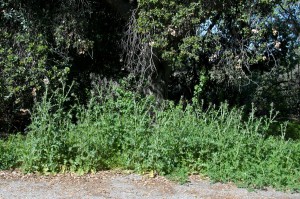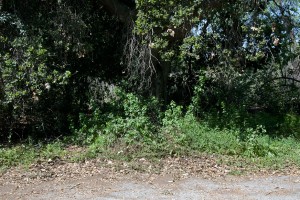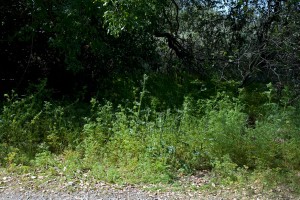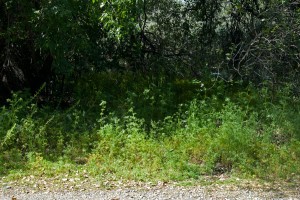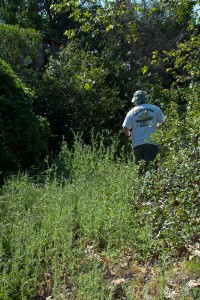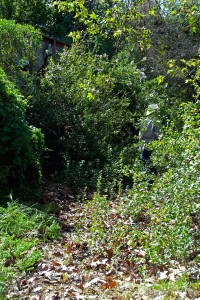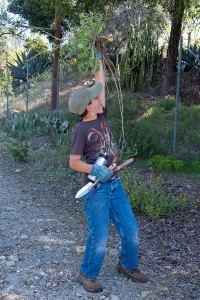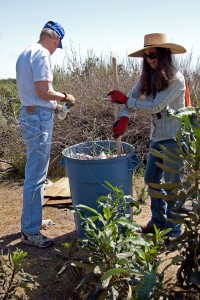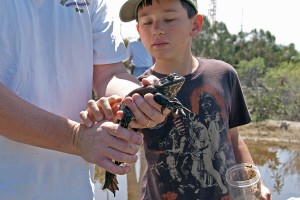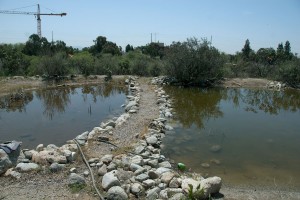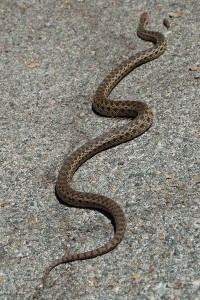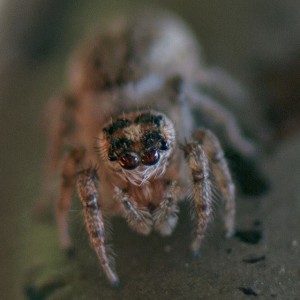“The destroyer of weeds, thistles, and thorns is a benefactor whether he soweth grain or not.
—Robert Green Ingersoll
Nine BFS volunteer benefactors devoted part of a beautiful April day to destroying weeds, thistle, and thorns at the BFS this past Saturday. Once again our primary targets were Italian Thistles (Carduus pycnocephalus). Plants that were little rosettes back in February are now waist-high stalks with bright purple flowers and fearsome spikes.
Italian Thistles have a sneaky two-pronged dispersal strategy. They make two kinds of seeds – silver seeds, which are dispersed by wind and can colonize distant areas, and brown seeds, which remain in the flowerhead, falling to the ground when the stalk senesces and germinating to form a dense infestation at the site of the original plant. Thus at the BFS we have a number of thick patches scattered around the station.
This is an excellent time of year to attack these thistles, as they’ve put most of their energy into the flowering stalks but have not yet gone to seed. We removed all the Italian Thistles from two patches on the west side of the entry road and several large patches on the east side of the lower neck. Here are some before and after photos:
- A dense patch along the entry drive just above the path to the south side of the lake:
- Another patch along the entry drive just before the paving ends:
- A large patch on the east side of the neck:
While we at it, we also pulled out any flowering invasive mustards that crossed our path. Ben Stapp (who pulled over 200 Italian Thistles) shows off the impressive tap roots of a Black Mustard (Brassica nigra) plant.
After we did in the Italian Thistles, we went to the ‘new’ toad pond, where we picked up trash, repaired the pond edges where the liner had been exposed, and removed Black Mustard, a big Bull Thistle (Cirsium vulgare), and Maltese Star Thistles (Centaurea melitensis) from the divider and the perimeter.
We also removed a large American Bullfrog (Lithobates catesbeianus) and put it back in pHake Lake.
The volunteers also had the opportunity to see some nice BFS wildlife. There were two kinds of tadpoles in the toad pond – small black ones of the Southern California Toads (Anaxyrus boreas halophilus) and larger ones of Baja California Treefrogs (Pseudacris hypochondriaca), some which had already grown legs. A San Diego Gophersnake (Pituophis catenifer annectens) crossed the entry drive right near the first thistle patch.
While the volunteers were enjoying their pizza lunch in the outdoor classroom, House Wrens (Troglodytes aedon) sang in the shrubbery, an Oak Titmouse (Baeolophus inornatus) gathered fur for its nest, a cheeky young California Ground Squirrel (Otospermophilus beecheyi) wandered among the benches looking for handouts, and a cute little jumping spider (Thiodina hespera) crawled onto one of the stools.
